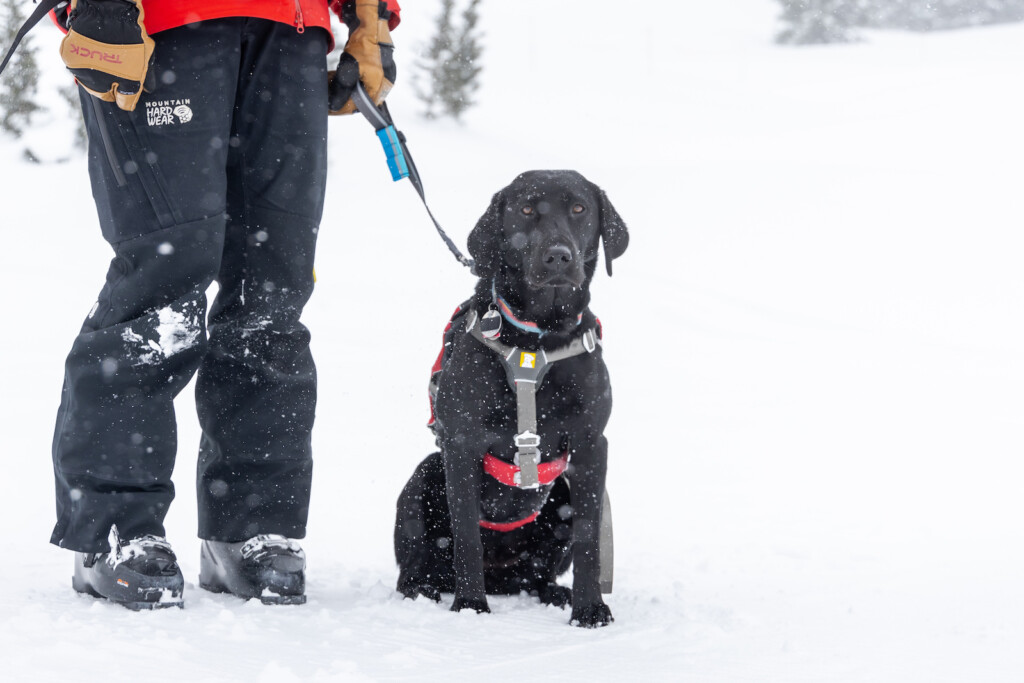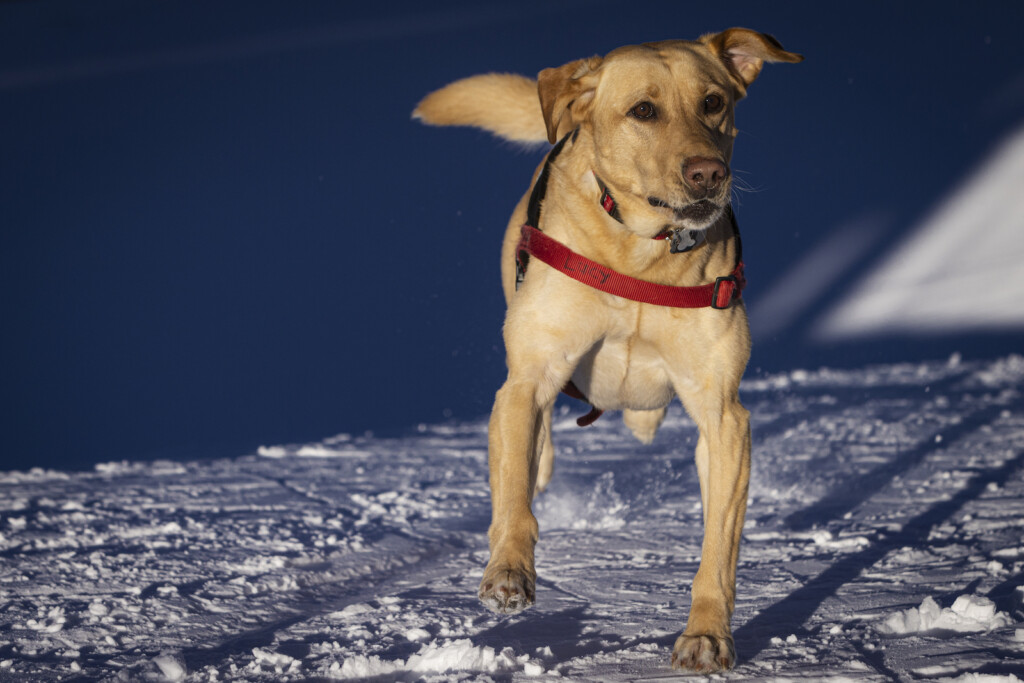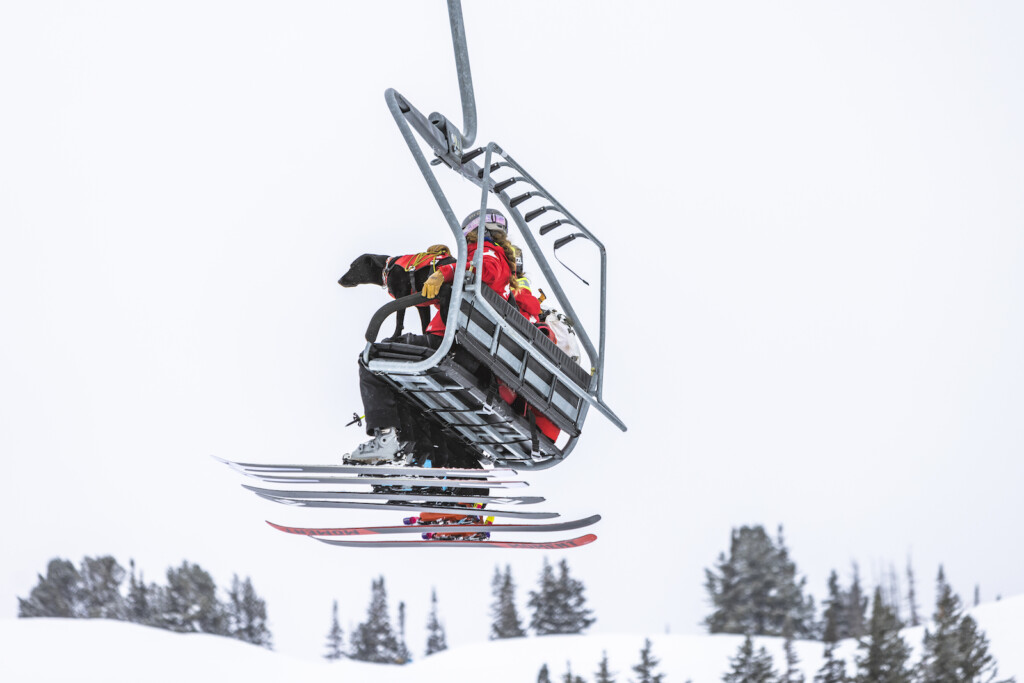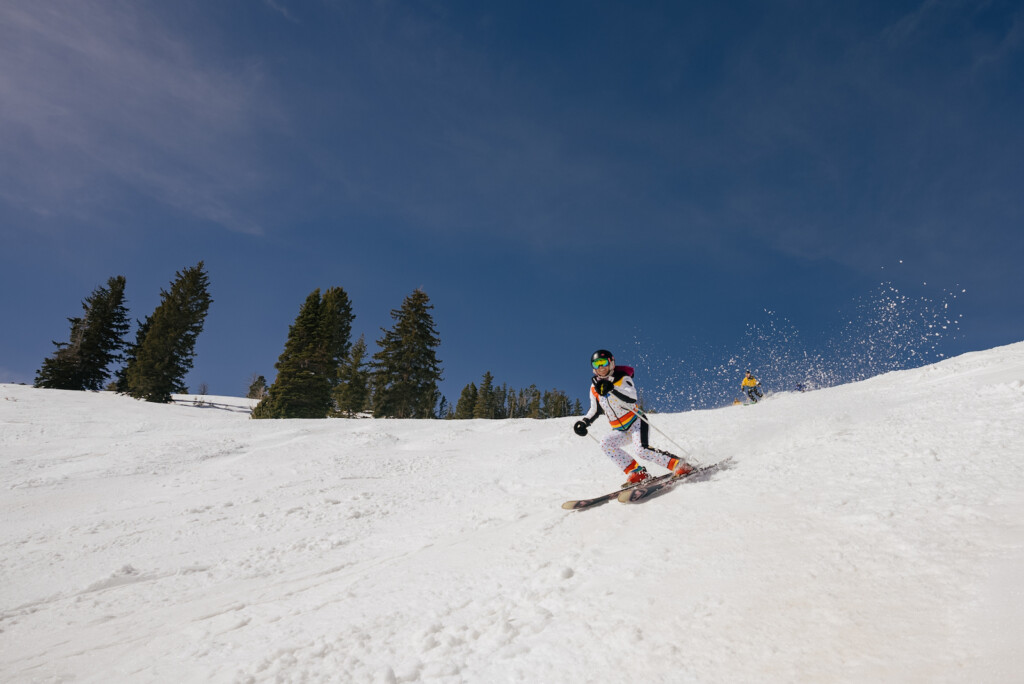“They love to search. Their ‘work’ is the most fun game they play,” says Greg Miller, Alta Ski Area Patroller and avalanche dog handler.
Utah’s Little Cottonwood Canyon experiences some of the most extreme snow conditions in the world, and avalanche dogs are essential to skier safety. Even when the Valley floor hardly has a dusting of snow, Alta and Snowbird might be covered up in hundreds of inches. This deep powder, steep terrain, differences in snow layers, and fluctuations of temperature combine to create avalanches.
The avalanche risk has always been high. From 1872 to 1927, nearly 100 people were killed in avalanches in the town of Alta. It’s therefore no surprise that avalanche mitigation and the employment of the country’s first avalanche rescue dog — a German Shepherd named Cola — began working at Alta in 1952.
The next avalanche dog wasn’t put to work until 1980, when Wasatch Backcountry Rescue (WBR) founder and Alta Ski Patroller Dan O’Connor became the ski area’s first dog handler. O’Connor’s dog Je Yu (pronounced Hey You) was a German shepherd mix bred with Snowbird’s first dog, Nico, and an Alta town dog.
Ski historian Alan Engen recalls that additional dogs were introduced to the program over time. “Around 1985 a second dog, a German shepherd named Jingo, was trained. In 1986, a third avy dog [short for avalanche], Crystal, a yellow lab, joined the team, and in 1987, a Chesapeake Bay retriever named Emma.”
Engen’s uncle, Sverre Engen, was Alta’s first Snow Ranger. He and his wife Lois learned to analyze the snowpack to see which layers were in danger of sliding. Sverre Engen later encouraged Monty Atwater, a fellow veteran of the WWII 10th Mountain Division, to come to Alta and help him study snow science. Atwater is considered the father of US avalanche safety work.
The first goal is always reducing the occurrence and severity of avalanches, but avalanches are acts of nature and can’t always be prevented. That’s when avalanche dogs are called in for search and rescue.

When an avalanche happens, a trained dog can work a 100’x100’ area and search for up to three victims. That’s because an avalanche dog’s training is based on something that comes naturally to it: scent finding.
Trainers looking for an avy dog typically select from eight breeds known for their noses, including Saint Bernards, labs, and hounds. What’s most important is that the dog has strong scent receptors, great endurance, a friendly temperament, and a desire to please.
Miller is the handler for an avy dog named in honor of O’Connor, a black lab called OC. He explains that avy dogs start their training at a young age.
“Avalanche dogs are trained from the time they are selected from a litter and brought home at around 7 weeks old,” he says. “Soon after arriving in their new home, they start to work with their handler to learn about ski lifts, snowmobiles, loud noises, and to meet their new pack.”
While their canine cousins in the valley might shudder at the sound of fireworks, avy dogs have to get used to explosives, which are set in order to purposely trigger avalanches at times and in places of the ski patrol’s choosing. The dogs also have to learn to ride calmly on ski lifts and snowmobiles.
In avalanche training, the trainer will hide an item under a shallow layer of snow. When the dog finds it, he’s rewarded. Over the course of the training, the object will be buried deeper and deeper. The dog learns to associate the human scent with something they want, like a treat or a game of tug-of-war.

The best avy dogs have a lot in common, but they’ve got their own personalities and don’t all get inspired by the same reward. OC loves tug toys. Ninja, a black lab employed by Deer Valley, loves a good tennis ball. Meanwhile, Greta Gustav Von Griffon, a wirehaired pointing griffon who works for Solitude, prefers a Milk Bone as a reward for a job well done. She also insists on just being called Greta.
Utah’s avalanche dogs are all part of Wasatch Backcountry Rescue (WBR), now a nonprofit sponsored by nine Utah Ski Resorts, working together with sheriff’s departments to respond to backcountry emergencies. WBR hosts training throughout the year to bring dogs from different resorts together and acts as the certifying agency for all Utah avy dogs. They also produce a great annual fundraising calendar, featuring the dogs’ photos and a few fun facts. Jagger, for instance, is a Sundance pup and a big Rolling Stones fan.
WBR dogs are first tested and certified at around two years old and, much like their human Search and Rescue counterparts, have to maintain their certifications biannually. Of course, they also have to be proficient in the basics of dog obedience, including recall, sit/stay, and leash work. It takes about 600 hours of training to develop a good dog.
Avy dogs normally retire between 8 and 10 years old, at which point they live out their lives as beloved pets. Some dogs keep going in spite of old age, like Banjo, who, at 13, is still part of the Alta pack.
And in the summer months? “They love to raft, swim, hike and travel with their handlers,” says Miller. “Most of the dogs spend just as much time outside in the summer as they do in the winter.”
Feature Image by Rocko Menzyk, courtesy of Alta Ski Area.



